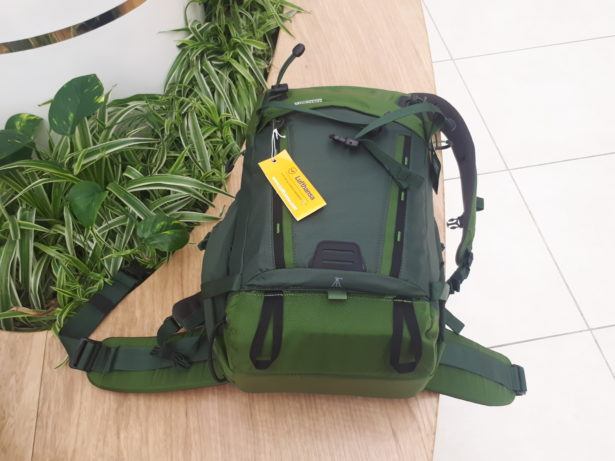Are you the kind of traveler who packs their bags the night before the trip and waits until they get there to create an itinerary, or do you start getting ready a few weeks before, looking up tourist attractions and things to do?
No matter where you fall on this scale, even the most spontaneous travelers have to agree that at least a bit of planning is essential before you leave, especially if you’re going abroad.
And while making a travel checklist might sound a bit boring, it can save you a lot of stress down the line: it will help you make sure you don’t miss any important sights, forget any important items at home, and, generally, when you have a checklist, you’re more informed and self-confident. Traveling the world sure is fun, but putting some information in writing in advance will help you avoid unpleasant surprises.
A few tools to help you with the technical stuff
Before grabbing pen and paper, we have an easier way.
You don’t want to waste a few hours scribbling down things (unless you take particular pleasure in that) because digital travel checklists are more fun and convenient to create. Plus, if you travel with someone, electronic lists are much easier to share and edit. Here are some tools to help you out:
- PDFChef by Movavi: PDF is the most versatile and accessible document format because anyone to whom you send your checklist will be able to view it without problems. This easy-to-use tool is great for editing, splitting, converting, merging, and deleting PDF files, and the good news is that you can use it straight from your browser.
- Canva: if you’re the creative type, and you love adding some cute creative elements to your checklist, Canva has plenty of free templates to choose from.
- Packtor: an intuitive packing list app that helps you create personalized lists based on your destination, trip length, and the number of travelers.
Now that you have the tools to create a comprehensive travel checklist, here’s what you should include in it.
What to pack and in what bag
If you’ll only be gone for three to five days, or you’re the type of person who loves traveling light, then you will probably make do with a carry-on.
If you’re going to travel with both, be sure to include what goes where:
- Your carry-on bag should include essential items: your passport and other documents, medication, valuables, phone and electronics, toothbrush, essential toiletries, and if you have space, one change of clothes. Think of it this way: in the event that your check-in bag gets lost, you should have all the essentials with you.
- Your check-in bag should include the rest of your belongings. On average, for a five-day trip, you need one pair of pajamas, one change of socks and underwear per day, one pair of jeans, two casual outfits, one formal outfit (if required, that is), and one activewear outfit. Keep in mind that these are approximate recommendations, and you’re free to adapt them according to your lifestyle. For example, if you’ll be staying in a hotel with laundry facilities, you can always pack fewer clothes and have more room in your bag for souvenirs.
Formatting tip: when making the packing list, don’t type everything in the same column. Instead, create sub-categories (clothes & accessories, toiletries, electronics, miscellaneous) so that it’s easier to keep track of what you need.
If you are traveling with friends, you might want to share this checklist to avoid any misunderstandings. Many times, groups pack some things together, so someone might not bring an umbrella, band-aids, or sunscreen, assuming the others will.
Itinerary
There’s nothing wrong with waiting until you arrive to establish your itinerary or even not having an itinerary at all. However, most travelers prefer some sort of structure, especially if they’re going abroad because they don’t want to miss anything worth seeing.
Depending on how many people you’re traveling with and your preferred sightseeing rhythm, you can either go in detail, plan each day, step-by-step, or create just some general guidelines. Sometimes, traveling with someone who planned the entire day, including all the things you’ll be visiting and where you’ll be eating, can feel a bit restricting. Keep in mind that it’s normal to be spontaneous while on vacation, and as you’re sightseeing, you might come across a museum, restaurant, or park that wasn’t on the list but that piqued your interest.
To add a bit of structure to your trip while still leaving room for the joy of discovery, here are some tips for creating your itinerary:
- Depending on the length of your trip, make a list of must-have attractions that are simply a must. If you google something like [your location] in 3 days/5 days/7 days, you’ll see all the destinations sorted so that you get an idea of what really is worth visiting and what’s optional.
- When planning your day, include one major attraction and one smaller one. Don’t try to cram too many things to do into one single day because you’ll be too rushed to enjoy anything. Some attractions, like the Louvre or Versailles in Paris, are so big you need an entire day to explore them at a comfortable pace.
- It’s possible to see all the places on your itinerary before the end of the trip. Now what? To avoid getting bored and/or confused, you can include a few attractions that you don’t insist on seeing, but that could be fun. These can also work as a backup in case one of the spots is closed.
- Write down the opening hours for each place you want to visit in advance. For example, many European museums are closed on Mondays, so you want to plan accordingly.
- Whenever possible, group the tourist attraction by region/neighborhood to waste less time on transport.
Last but not least, if you’re traveling with more people and you have different tastes, you can create a separate column on your itinerary with your friends’ names. This way, you know where you can find each other, and those who don’t like one activity can suggest something else.




